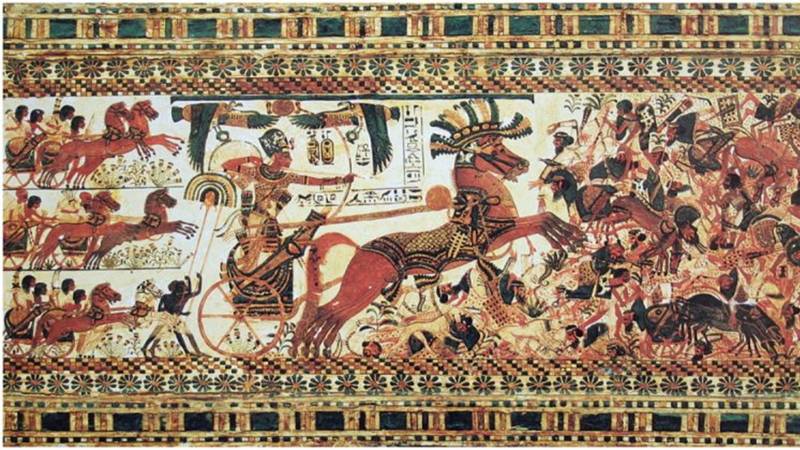
Megiddo, an ancient site southeast of Haifa, is known for being the location of one of the earliest recorded battles in human history. Beyond its military significance, Megiddo is the site of a Kibbutz and is considered one of the most impactful archaeological discoveries in human history. With a history spanning approximately 8,000 years, Megiddo is mentioned nearly eleven times in the Hebrew Bible. Its strategic location at the crossroads of military and trade routes significantly increased its value, and it remains significant today as the prophesied site of the final cataclysmic battle between good and evil.
The word "Armageddon" derives from the Hebrew "Har Megiddo" or "Mount of Megiddo." According to the New Testament, the Hill of Megiddo is where the kings of the earth, under demonic leadership, will wage war against the forces of God, led by Jesus Christ. “And they assembled them at the place that in Hebrew is called Armageddon.” (Rev 16:16). Located in the Jezreel Valley, Megiddo was part of a crucial trade route in the ancient world, linking Egypt with Mesopotamia, as well as Jerusalem and the Jordan River Valley with the coastal trading cities of Phoenicia. Megiddo has played a vital role in shaping the course of global events since ancient times. Joshua, one of Moses' most prominent generals, is said to have captured the land of Canaan and, according to the Bible, defeated the King of Megiddo. Among the major military encounters at Megiddo is the Battle of Megiddo in 1478 B.C.E., fought between the Egyptian Pharaoh Thutmose III and a Canaanite coalition that included Megiddo and Kadesh, who had revolted against the Egyptian ruler.
The German Association for the Exploration of Palestine selected Gottlieb Schumacher to conduct excavations from 1903 to 1905, leading to significant discoveries, including tombs dating back to the Bronze Age
Megiddo boasted a formidable fortress atop the hill, heavily relied upon by the Canaanites for defence. However, the superior manoeuvrability of the Egyptians led to their victory. Another significant battle fought at Megiddo occurred in 609 B.C., between the Egyptians and the Judahites, during which Josiah, one of the godliest kings of Israel, was killed by the army of Pharaoh Necho. In 1799, Napoleon fought the Ottoman army in the Jezreel Valley and called Megiddo "the most natural battleground on earth." The Battle of Megiddo in 1918 took place near Tel Megiddo at the end of World War I and was won by British General Edmund Allenby, whose decisive victory ended Turkish rule in Palestine.
Tel Megiddo revives the memories of heroes, tyrants, and civilisations, serving as a visual reminder of the violent yet glorious and unique past of one of the most embattled sites in history. As Henry Waxman aptly stated, “The sanctity of our battlefields, monuments, and veterans institutions is of utmost importance to preserve military history and pay respect to those who fought.” Megiddo has long been the nerve centre of mighty empires, witnessing sieges, serious damage, and destruction over the years, only to be rebuilt many times by new rulers on the ruins of previous structures. According to a biblical passage from 1 Kings, “And this is the account of the forced labour which King Solomon levied to build the house of the Lord and his own house and the Millo and the wall of Jerusalem and Hazor and Megiddo and Gezer.” These verses refer to Solomon’s grand building projects, which also included Megiddo.
The German Association for the Exploration of Palestine selected Gottlieb Schumacher to conduct excavations from 1903 to 1905, leading to significant discoveries, including tombs dating back to the Bronze Age. Other momentous archaeological finds included the unearthing of the uppermost cities of the Tel by the Oriental Institute of the University of Chicago. In 1998, Eliezer Piasetzky, a nuclear physicist, utilised the precise and accurate radiocarbon dating method to determine the age of ancient buildings, pottery, and more. Today, Professor Finkelstein continues to uncover the magnificent relics of the Tel. Finkelstein employs the scientific method of micro-archaeology to illuminate the remnants of the past. An intriguing aspect of these excavations was the discovery of stables, along with the troughs and posts where horses were tied. Megiddo served as a cavalry base for horses that dominated the battlefield and performed a variety of crucial roles. According to Dr Norma Franklin’s research, “Megiddo was a major Israelite city that was transformed into a horse training centre with large stables and arenas where the palaces once stood.” At the Tel, one is always a discovery away from rewriting ancient history.
Understanding the history of these ancient overlapping communities at the Tel not only enriches our imagination by deepening our understanding of them but also provides valuable insights into their belief systems, practices, and patterns. This allows us to analyse recurring patterns and experiences from the past that have fuelled conflicts, which remain relevant even today. Ultimately, this broadens our understanding of human nature and can lead to the cultivation of a more inclusive culture. The profound wisdom in George Santayana’s words captures this idea: “Those who cannot remember the past are condemned to repeat it.”
As Israel’s war in Gaza rages nearby, with the terrifying sounds of air raid sirens and bombardments, coupled with feelings of loss and pride in sacrifice, Tel Megiddo reminds us of Richard Nixon’s visionary quote: “Peace is the real memorial for those who have died in war.”

